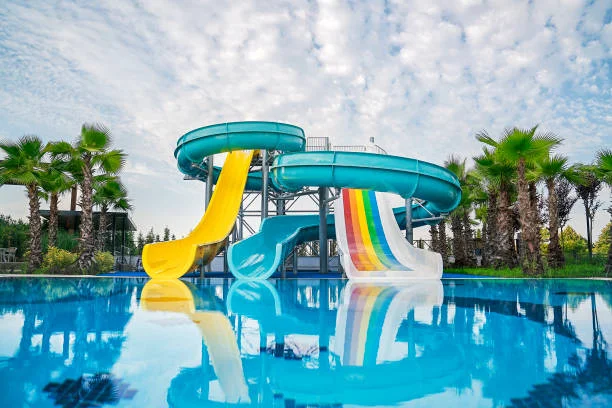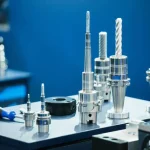When most people hear the phrase water slide, childhood memories of brightly colored tubes and splash-filled summers tend to surface. Yet over the past two decades, the industry has undergone a remarkable evolution. No longer confined to kiddie pools or family attractions, today’s adult water slides are architectural statements, revenue-generating powerhouses, and multi-sensory thrill machines capable of satisfying the most seasoned adventure seeker. From the 110-meter “Sky Rocket” on Pacific cruise liners to transparent acrylic serpents that wind through five-star desert resorts, the sector now represents a sophisticated intersection of structural engineering, psychology, and meticulous safety science.
This article takes a deep dive—pun intended—into the world of adult water slides: their history, design principles, market dynamics, safety frameworks, and the technological innovations driving the next wave of watery adrenaline. For leisure-facility owners, engineers, and thrill enthusiasts alike, the following pages provide a comprehensive primer and strategic roadmap. Read more on this topic in each subsequent section to explore every critical facet, from sustainability to inclusive design.
A Brief History of Slides “Growing Up”
Water slides were first patented in the early 20th century, but it wasn’t until the late 1970s that commercial water-park culture truly blossomed. In those formative years, most slides had gentle gradients suited to children and cautious parents. The adult demographic, meanwhile, found its thrills elsewhere—in roller coasters, free-fall towers, or extreme sports. By the mid-1990s, demographic research began revealing a lucrative gap: holidaying adults sought high-thrill attractions that involved aquatic cooling, yet remained family-compatible.
Three pivotal developments triggered the shift:
- Advanced Composite Materials – Fiberglass-reinforced polymers allowed longer spans, tighter helices, and extreme inclines without prohibitive weight.
- Computer-Aided Fluid Dynamics (CFD) – High-speed workstations enabled precise modeling of splash, flow rate, and rider deceleration long before prototype fabrication.
- Regulatory Maturation – Bodies such as ASTM International published robust design standards, instilling consumer confidence and insurance viability.
By the late 2000s, adult water slides occupied prime real estate in almost every new water-park master plan.
You might also like: A fresh take that complements what you just read.
Engineering Principles and Materials
While the casual rider may only notice the speed and splashdown, engineers see a delicate balance of physics:
| Design Variable | Typical Range | Impact on Adult Experience |
| Slope Angle (°) | 15 – 70 | Controls acceleration; steeper for speed slides, gentler for riders ≥ 100 kg. |
| Flume Width (mm) | 650 – 1,200 | Wider channels safely accommodate varying shoulder breadths and group tubes. |
| Water Flow (L/min) | 1,000 – 4,000 | Ensures adequate lubrication, buoyancy, and cooling. |
| Fiberglass Layers | 3 – 7 | More layers allow longer spans between supports, vital for architectural aesthetics. |
Modern slides combine isophthalic gelcoats for UV resistance, a vinyl ester barrier layer for chemical durability, and multiple E-glass rovings for structural integrity. Transparent sections employ cast-acrylic up to 100 mm thick, thermo-formed at high temperature to avoid micro-fractures. Support columns often use hot-dip-galvanized steel with epoxy topcoats to resist chlorinated environments.
Typology of Adult-Oriented Water Slides
- Speed Slides – Near-vertical drops reaching 90 km/h, leveraging gravity and minimal friction.
- Aqua Loops – Inclined launch capsules with trap-doors that trigger a 360° loop; centrifugation forces can peak at 2.5 g.
- Mat Racers – Parallel lanes encourage competitive social interaction and replay value.
- Hydro-Magnetic Water Coasters – Linear induction motors or conveyor belts propel riders uphill, creating roller-coaster profiles on water.
- Bowl and Behemoth Funnels – Giant saucers or funnels that swirl riders before a central plunge; visually spectacular and capacity efficient.
- Drop Capsules – Clear acrylic capsules with heartbeat-mimicking audio that heightens suspense before floor retraction.
- Hybrid Monsters – Multi-section slides combining coils, vertical drops, and dark-ride corridors with projection mapping.
Each category addresses specific psychological triggers—speed, suspense, competition, visual spectacle—to articulate the adult thrill spectrum.
Safety Frameworks and Operational Protocols
The lifecycle of adult water-slide safety encompasses designs, manufacturing, installation, daily operation, and decommissioning:
- Design Certification: Adherence to ASTM F2376 for flume geometry, rider clearance envelopes, and structural load calculations.
- Factory Acceptance Testing: Hydrostatic pressure tests at 1.5 × design flow, ultrasonic weld inspections, and laminate thickness verification.
- Site-Specific Risk Assessment: Environmental factors (wind load, seismic activity, salt exposure) inform anchorage torque and corrosion allowances.
- Operational SOPs: Ride attendants must maintain dispatch intervals that preserve downstream rider separation of ≥ 10 m or ≥ 10 s, whichever is larger.
- Rider Management: Weight-sensor gates ensure patrons remain within 45 kg–135 kg limits. Height markers and automated turnstile counts track hourly throughput.
- Emergency Egress: Lateral catwalks every 15 m and evacuation hatches at each 180° turn facilitate rescue without draining the entire slide.
Regular non-destructive testing—infrared thermography for delamination, dye-penetrant inspection for micro-cracks—forms part of the annual audit.
Market and Economic Considerations
Globally, the water-park industry surpasses USD 45 billion in annual revenue, with adult slide attractions accounting for approximately 35 % of ticket-driven income and an even larger share of marketing impressions. Key drivers include:
- Demographic Shifts – Millennials and Gen Z adults prioritize experience over possession, fueling demand for premium thrills.
- Instagrammability – Iconic slides serve as visual anchors for social media, effectively acting as unpaid advertising.
- Repeat Visitation – High-intensity attractions encourage multi-visit season passes, stabilizing cash flow.
- Ancillary Spending – Cabana rentals, VIP slide-cut queues, and merchandising bolster per-capita spend.
A typical tier-one adult slide—costing USD 4–7 million—can achieve payback in 24–36 months when paired with effective merchandising and event programming such as “after-dark slide parties.”
Guest Psychology: Why Adults Crave Aquatic Thrills
Nostalgia and Regression
Water offers a subconscious return to the safety of childhood swim lessons, allowing adults to experience permitted play in a socially acceptable setting.
Physiological Sensations
Hydrodynamic forces create unique vestibular stimuli distinct from land-based coasters, such as sustained laminar flow against the skin and rapid temperature fluctuations. Dopamine and endorphin surges correlate with perceived risk and mastery.
Social Bonding
Group raft slides and side-by-side racers foster communal euphoria, reinforcing friendship ties or corporate-team cohesion.
Understanding these drivers helps operators tailor marketing, soundtrack curation, and queue theming to maximize emotional payoff.
Inclusivity and Accessibility
The term “adult” must never exclude riders with mobility, sensory, or neurodiverse conditions. Leading design practices now incorporate:
- Transfer Platforms: Raised decks enabling wheelchair users to transition into slide rafts with minimal assistance.
- Sensory-Modulated Lighting: Adjustable LED sequences that can dim or color-shift for guests with photosensitivity.
- Audible Dispatch Cues: Multi-lingual announcements and vibro-tactile wristbands for deaf or hard-of-hearing patrons.
- Weight-Assist Rafts: Integrated buoyant foam cores reduce combined mass through high-angular turns, allowing heavier riders within safety margins.
Inclusivity not only broadens market reach but can unlock public grants or tax incentives in many jurisdictions.
Sustainability and Environmental Stewardship
Water parks have historically battled public perception as lavish water consumers. Innovations now enable impressive conservation metrics:
- Closed-Loop Filtration: Regenerative media filters achieve 90 % recirculation, slashing fresh-water inputs.
- Variable-Frequency Pumps: Sensors adjust flow to rider load, saving up to 40 % electricity during off-peak hours.
- Solar Thermal Heating: Roof-mounted collectors pre-heat make-up water, reducing gas-fired boiler usage.
- Recycled Fiberglass: Post-consumer laminate recovered through pyrolysis can re-enter the supply chain as filler for non-structural components.
For facilities in drought-sensitive regions, sustainability isn’t just ethical—it’s existential.
Technology Horizons
- Augmented Reality (AR) Goggles – Waterproof headsets overlay dragon chases, underwater ruins, or gamified scoreboards; early trials show 18 % longer visitor dwell time.
- On-Ride Audio – Bone-conduction speakers embedded in rafts eliminate airborne noise pollution while delivering synchronized soundtracks.
- Dynamic Water Jets – AI-controlled valves modulate spray patterns based on raft velocity, ensuring consistent friction coefficients even with variable rider weight.
- Transparent Momentum Gauges – LED strips embedded in acrylic flumes display real-time speed, elevating rider bragging rights and social sharing.
- Prefabricated Carbon-Fiber Segments – Though currently cost-prohibitive, carbon-fiber promises longer cantilevers and unprecedented curvature, potentially reinventing park skylines.
The trajectory is clear: tomorrow’s adult water slides will fuse immersive storytelling with extreme kinetics, all underpinned by sustainable operations.
Business Implementation Checklist
For owners contemplating their first adult-oriented slide, the following condensed workflow ensures strategic alignment:
- Feasibility Study – Market catchment analysis, attendance projections, and financing avenues.
- Concept Design – Choose slide category aligned with brand narrative; produce 3-D renders for stakeholder buy-in.
- Regulatory Liaison – Engage local building authorities early to avoid retroactive changes.
- Vendor Tendering – Evaluate manufacturers on track record, warranty terms, and post-install service.
- Construction Phase – Coordinate civil, mechanical, and electrical timelines; adopt BIM for clash detection.
- Staff Training – Institute ASTM-compliant certification and emergency-drill rehearsals.
- Marketing Launch – Leverage drone footage, influencer previews, and timed release of POV videos.
- Post-Occupancy Evaluation – Collect rider feedback, monitor throughput, and initiate phase-two upgrades.
Case Studies
Cruise Ship “AquaLoop Odyssey”
Launched 2023, this 40-meter loop slide increased average passenger spend by USD 28 and extended time on sun deck zones by 35 %. The engineering solution—lightweight acrylic plus aluminum supports—was essential to maintain ship stability limits.
Desert Resort “Oasis Serpentine”
Despite annual rainfall of < 100 mm, the resort installed a closed-loop recycling plant recovering 95 % of slide discharge. Result: LEED Platinum certification and a 15 % room-rate premium during peak season.
Urban Indoor Park “Metropolis Splash Hub”
Occupying a former textile mill, the park introduced hydro-magnetic coasters that doubled rider capacity versus traditional gravity slides, offsetting high downtown lease costs.
Future Outlook: 2025–2035
- Hyper-Personalization: RFID wristbands may trigger customized lighting and soundtrack per rider.
- Modular Pop-Up Slides: Quick-assembly units for festivals or temporary waterfront developments.
- Biometric Queueing: Heart-rate-based priority lanes to ensure riders are physiologically ready, reducing dispatch refusals.
- Net-Zero Water Parks: Full rainwater capture, grey-water reuse, and on-site solar fields.
Adult water slides have graduated from novelty to necessity within the global leisure portfolio. By blending cutting-edge engineering, rigorous safety standards, and emotionally resonant storytelling, today’s attractions deliver unmatched return on investment and guest satisfaction. Whether perched on a cruise-ship top deck or weaving through an urban skyline, these slides symbolize humankind’s enduring quest for joy, challenge, and shared memories.
Operators who master the nuances—structural integrity, guest psychology, inclusivity, sustainability, and smart marketing—stand poised to capture a market that shows no sign of slowing. As technology pushes the envelope of what is possible, one truth remains: there will always be adults ready to climb the tower, take a deep breath, and plunge into the exhilarating unknown.
Ready for a deeper dive? Our most popular pieces live at 2A Magazine.







